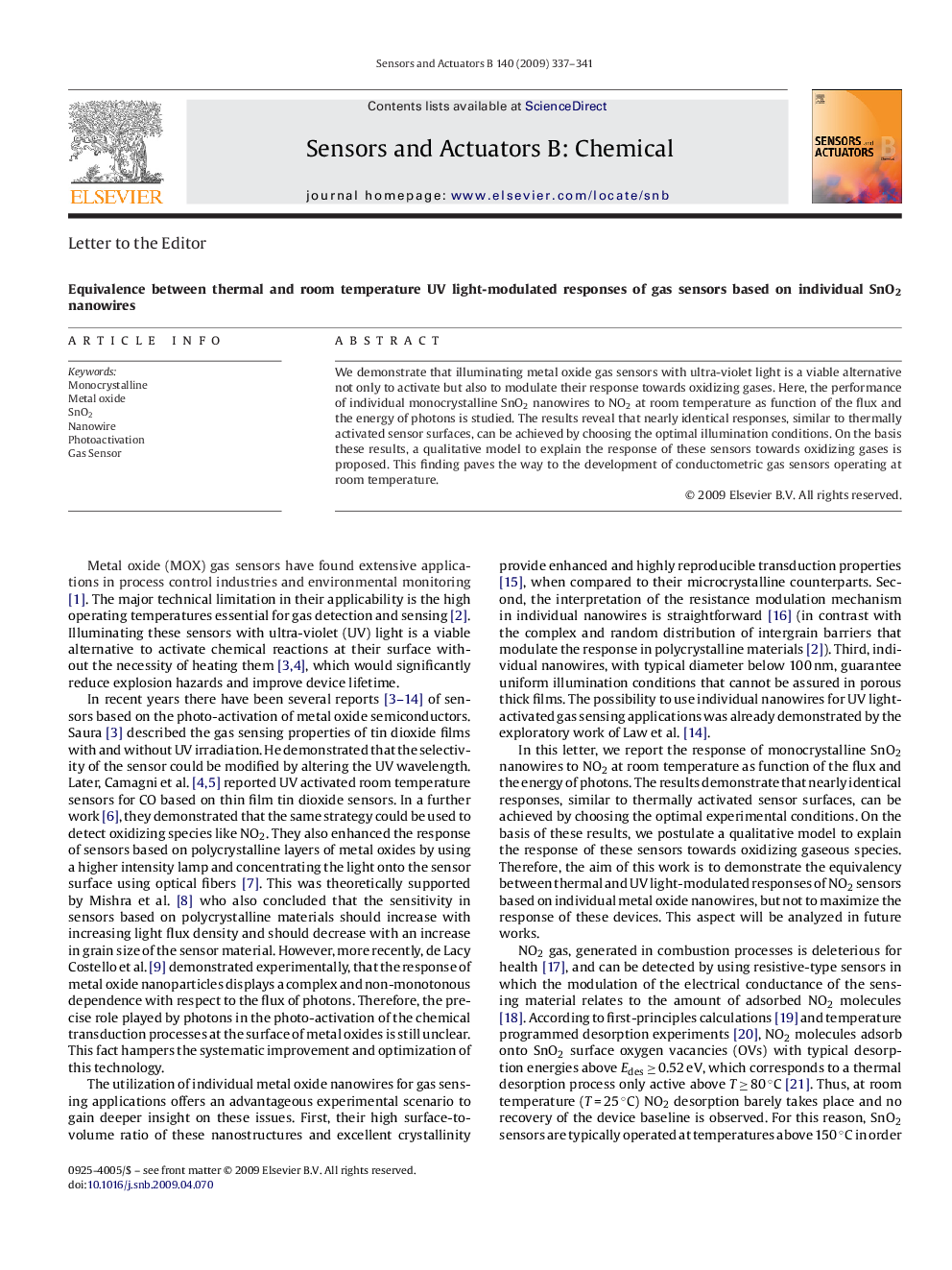| Article ID | Journal | Published Year | Pages | File Type |
|---|---|---|---|---|
| 746412 | Sensors and Actuators B: Chemical | 2009 | 5 Pages |
Abstract
We demonstrate that illuminating metal oxide gas sensors with ultra-violet light is a viable alternative not only to activate but also to modulate their response towards oxidizing gases. Here, the performance of individual monocrystalline SnO2 nanowires to NO2 at room temperature as function of the flux and the energy of photons is studied. The results reveal that nearly identical responses, similar to thermally activated sensor surfaces, can be achieved by choosing the optimal illumination conditions. On the basis these results, a qualitative model to explain the response of these sensors towards oxidizing gases is proposed. This finding paves the way to the development of conductometric gas sensors operating at room temperature.
Related Topics
Physical Sciences and Engineering
Chemistry
Analytical Chemistry
Authors
J.D. Prades, R. Jimenez-Diaz, F. Hernandez-Ramirez, S. Barth, A. Cirera, A. Romano-Rodriguez, S. Mathur, J.R. Morante,
